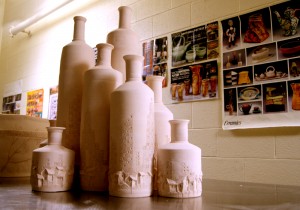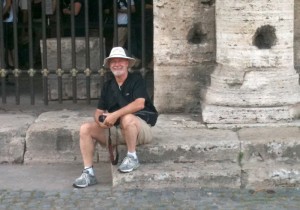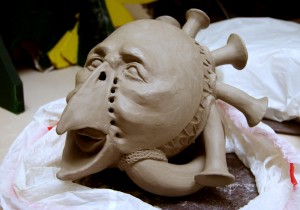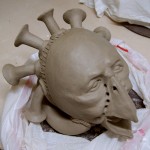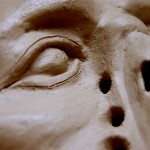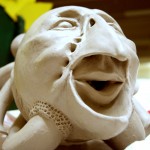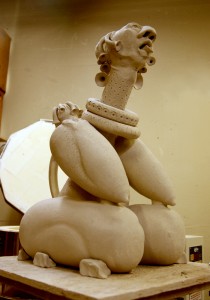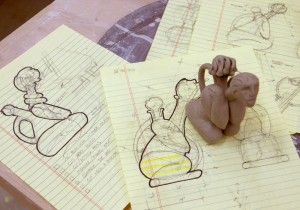Ten days from now, National Novel Writing Month begins. For anyone who has ever made the statement, “I’ll write a novel someday”, well, November is the month to write that some day novel. I have enlisted the utterly obscure, eccentric, music archeologist, Dr. Ephriam Bowen to write with me this year. He will have to find his way from a secretive excavation site in Central America to make meetings here in the states, but he has generously committed to do so. This shy, pith-helmet adorned fossil has much to say and I look forward to hearing his story. The following is just a glimpse of what the novel will reveal:
“I have been too busy and too excited to journal this week. We have discovered additional evidence of the reverence that the Uxmalico community placed on music. As hundreds of years of burial fill and dust were painstaking shaved from the base of a test pit, just a fraction of an inch at a time, a large ceramic shard overcame its shyness to bring smiles and cheers to the whole team.
Staring up from centuries of silence appeared a glyph bearing the classic image of a Macaw playing a horn flanked by a graphical symbol reserved for identifying brightness of gods. On the horn is a simple arc and half-moon that can be translated breath or wind. A tiny inscription near the base of the horn is not completely discernible, but may be significant upon closer exam.
Surely it is mere coincidence that a calm day was interrupted by a gentle breeze and the flutter of wings as we gathered around the excavation’s prize. But I cannot help but to interpret this finding as another indication that music played a part in the mysticism of this culture. The scribe who painted this glyph has not been identified and the crudeness of the style may be an indication of youth, inexperience, or perhaps a caste who was not considered worthy of contributing to the permanent record. We continue to excavate and will expand the tests to the edge of a square depression that borders the hostile overgrowth.”
